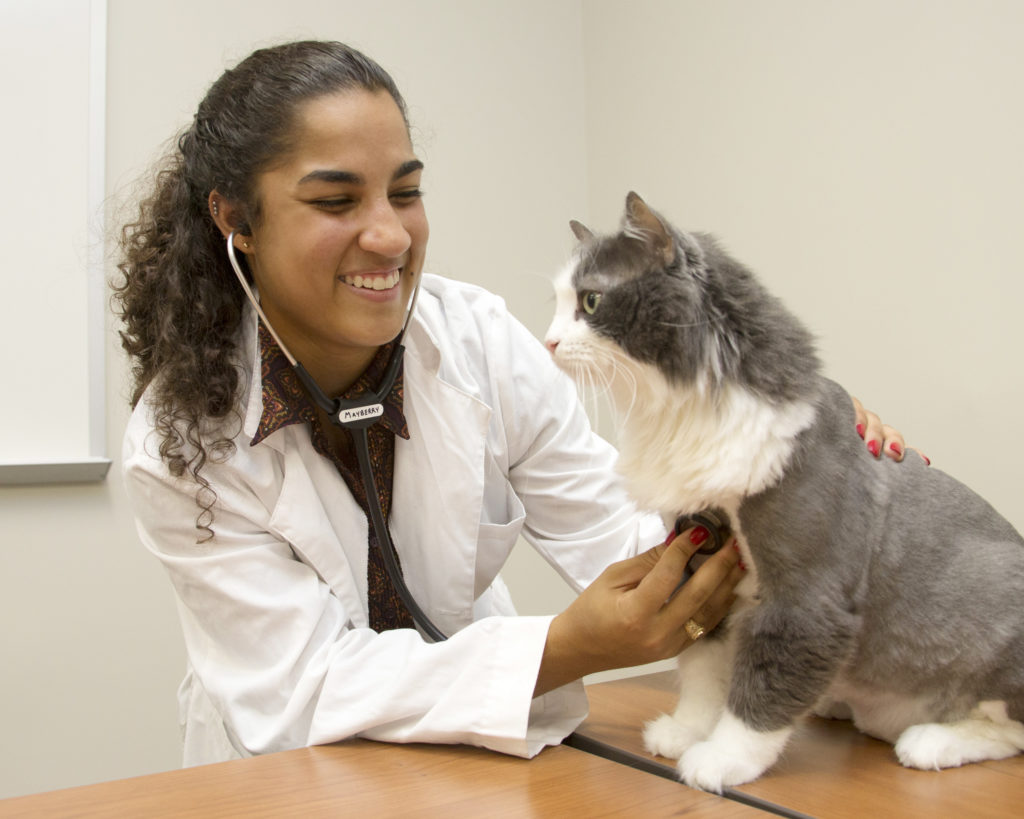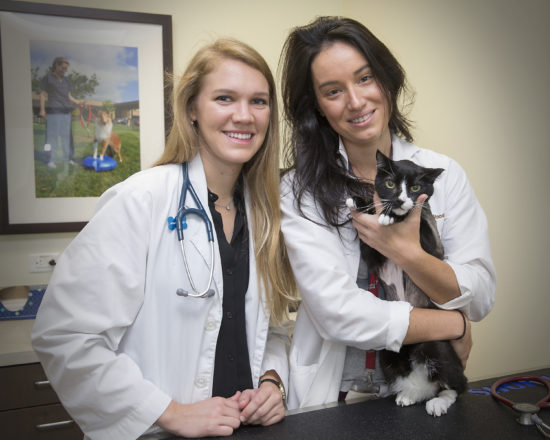Texas A&M Small Animal Hospital Earns Gold-Level ‘Cat Friendly’ Designation

While dogs may have the reputation for being the friendliest of the companion animals, cats actually outnumber dogs in U.S. households.
According to the American Association of Feline Practitioners (AAFP), more than 86 million cats, compared to 78 million dogs, reside with families in America, yet dogs seem to receive more consistent and regular veterinary health care than their feline counterparts.
To make the Texas A&M Small Animal Hospital (SAH) more comfortable for all of our (sometimes) furriest friends, SAH staff members have worked over the past five years to implement changes to make the hospital more “cat friendly.”
For their work, the Texas A&M hospital was recently recognized with a gold standard designation as a Cat Friendly Practice by the AAFP.
“Whether it’s a routine checkup or special visit, the staff at the Small Animal Hospital is committed to ensuring that cats get the best care. To further its dedication, the hospital recently implemented the Cat Friendly Practice (CFP) program to offer pet owners more at every phase of the cat’s health care process,” said Dr. Jonathan Levine, professor and Helen McWhorter Chair in Small Animal Clinical Sciences (VSCS). “Through their work, the hospital staff has distinguished themselves as one of only a few teaching hospitals in the United States to earn the gold level designation.”
The Cat Friendly Practice (CFP) program was pioneered by the AAFP to provide a framework for creating a positive practice environment for cats, including medical care that supports the cat’s unique needs and knowledgeable staff members who understand feline-friendly handling.
The Gold Standard status is awarded to practices that have incorporated the optimum level of Cat Friendly Criteria.

Practices that aspire to achieve “cat friendly” status create a “cat friendly” environment by completing a CFP checklist outlining required guidelines and submitting an online application for review by the AAFP.
The SAH has worked to achieve the designation by creating separate waiting areas for cats and dogs, as well as separate ward areas and cat housing, all of which reduces feline stress.
At a CFP-designated clinic, the veterinary staff incorporates cat-friendly features into the physical environment of the practice including special waiting rooms or waiting accommodations, feline-sensitive examination rooms and ward facilities, and equipment appropriate specifically for cats.
Staff members also approach cat care in a different manner. The staff learns how to understand the needs of the cat such as how to interpret a cat’s facial expression and body language.
Furthermore, the staff is well-trained in alternate techniques to calm an anxious cat and ensure that exams and procedures do not escalate anxiety.
“Texas A&M has a long-standing history of focusing on feline issues,” said Dr. Audrey Cook, associate professor and internist at the SAH. “Achieving AAFP Gold Standard recognition just builds on our commitment to providing excellent care to cats.”
###
For more information about the Texas A&M College of Veterinary Medicine & Biomedical Sciences, please visit our website at vetmed.tamu.edu or join us on Facebook, Instagram, and Twitter.
Contact Information: Jennifer Gauntt, Interim Director of CVM Communications, Texas A&M College of Veterinary Medicine & Biomedical Science; jgauntt@cvm.tamu.edu; 979-862-4216


